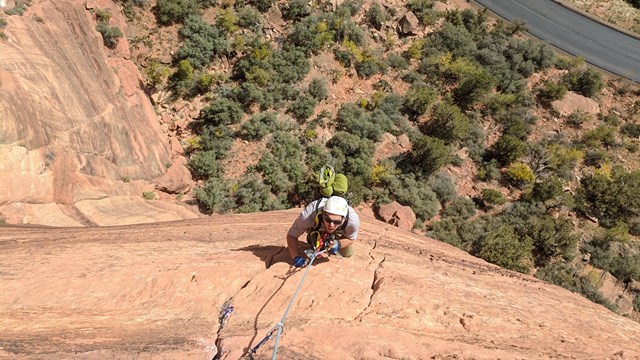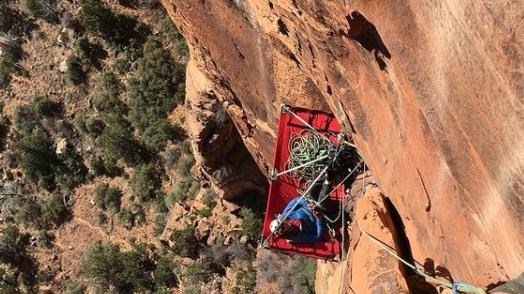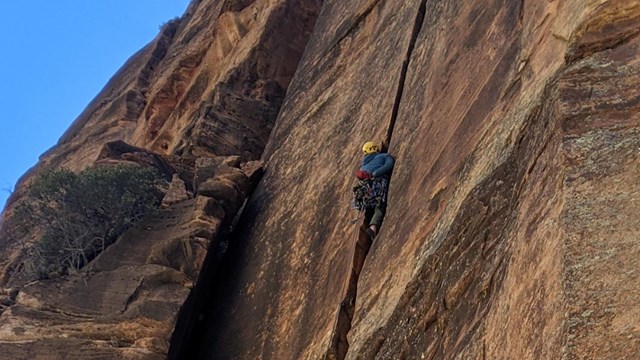|
Climbing routes on cliffs used by nesting peregrine falcons temporarily close from March 1 to mid- to late-summer every year. The falcons are especially sensitive to being disturbed while they nest. If disturbed, the nesting pair may abandon their nest site and not nest again until the following year. The closure date is based on National Park Service (NPS) monitoring of peregrines’ arrival to nesting sites on cliffs in the park. Raptor ClosuresClick the link to download the 2025 Climbing Guide to Seasonal Raptor Closures. This guide is used in conjunction with the status updates below to provide climbers with an increased understanding of what cliffs are closed to climbing during nesting season. All climbing areas are open as of August 1, 2025.

NPS / Gavin Emmons Peregrine FalconsClimbing routes on cliffs used by nesting peregrine falcons in Zion National Park close on March 1 every year. In previous seasons, park biologists and local volunteers have worked to open cliffs throughout the season as nests are located. However, due to emerging wildlife conservation needs, park staff will no longer intensively monitor territories. Instead, the 2025 climbing season will utilize climber reports of falcon sightings submitted to the Zion Climbing Coalition to help with cliff closure re-openings prior to the August opening date. Refer to the climbing closure guide on how to report peregrine observations, especially birds displaying potential nesting behavior. These submissions will help Zion wildlife staff confirm nest locations and potentially open cliffs. All peregrine falcon closures will be lifted on August 1st. California CondorsCalifornia condors, a federally endangered species, are another bird that calls Zion’s cliffs home. In the history of the park, only two chicks have successfully survived long enough to fly from the nest, and both were near Minotaur Tower within the Angels Landing closure. We close cliffs for condor nesting because climbing near a nest can cause parents to abandon an egg or habitualize newly fledged chicks to human activity. We apologize for any inconvenience. By respecting condor closures, you are helping conserve a species whose population in Utah and Arizona number fewer than 100 individuals. This also makes Zion one of the few places on earth where you can be climbing and see North America’s largest bird soar overhead, or even beneath you if you are lucky! 
Seasonal Raptor Closure Climbing Guide
Click to download the current edition of the Seasonal Raptor Closure Guide. 
Climbing
Learn about Rock Climbing rules and regulations in Zion, and make reservations for overnight climbs. 
Climbing Bivy Permits
Bivy permits are required for all overnight climbs in Zion National Park. Permits are not required for day climbs. 
Climbing Regulations
Regulations around climbing in Zion, including guiding, bolting, establishment of new routes, and bivying. |
Last updated: July 31, 2025
